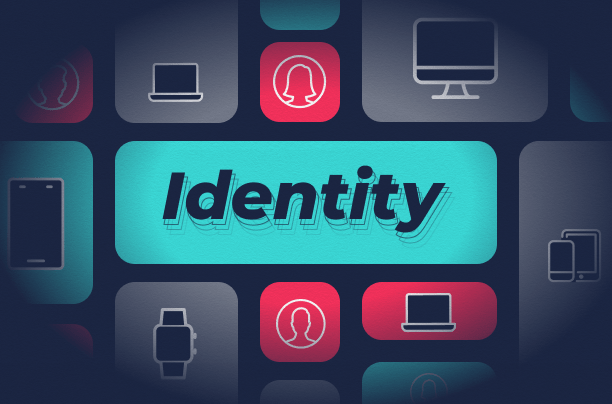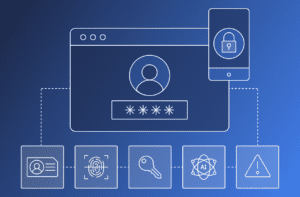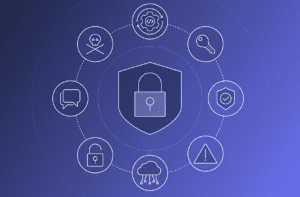Transmit Security sales director Lou Ann Hunt has been helping companies achieve success in the identity space for over a decade, and she’s always been curious about the next big innovation. Despite spending her early career in detail-oriented software development, Lou Ann was drawn to the identity space by a desire to engage with the more holistic aspects of solution engineering.
At Transmit Security, she’s a pioneer who leads numerous projects that neatly dovetail all aspects of the business. After a record-shattering Series A funding round at the company, Lou Ann believes that all eyes are on going passwordless. We sat down to discuss her experience and unique insights into the identity space.
Tell us about your experience in the identity space.
I’ve always been a bit of a dabbler, so from the earliest days of my career, I gravitated toward solutions and the bigger picture.
While that bigger picture has primarily been in the security arena, I transitioned to my current identity focus because identity ultimately touches so many different areas of the business. Identity projects are not niche efforts, and they’re not limited to one small part of the organization. That really appeals to me, so identity gradually became my new focus.

What brought you to Transmit Security?
It was primarily their progress in the usability of identity. One of the things that really bothered me about traditional identity implementations was that neither speed nor ease-of-use was prioritized. That’s why I was excited about coming to Transmit Security: they make identity usable in the environment to deliver real and rapid business results.
What do you like about working in the identity space?
Identity ultimately brings together many disciplines, and that’s what I love about it. You’re working with the digital folks to deliver the right experience, the risk team to have confidence that account takeover hasn’t occurred, and the security teams to ensure that their trust requirements are met.
That’s not to mention the product owners who represent the diverse needs of many stakeholders and the business team that determines the project’s resources. We’re approaching business use cases in a new and holistic way: driving a better customer experience, eliminating fraud and increasing usability all at the same time.
How have you seen this industry grow and take shape?
This industry has exploded over the last ten to twenty years. That’s both in terms of the scope of the problem sets it solves as well as the tools it incorporates. When I first started, there were just a couple of big players. Now, when you Google “identity,” there are pages and pages of results. Ten years ago, you wouldn’t need to differentiate to describe your focus; I would just say that I’m in “identity,” not CIAM or passwordless authentication.
The focus in the identity space used to be isolated to fraud and security. Now, people are starting to wake up to the experience side of things. A poor authentication experience can have a crucial impact on things like customer attrition, satisfaction and loyalty. Identity is now focused on improving security without penalizing the customer journey. An organic identity experience is increasingly becoming a need-to-have.
Have the conversations you’ve been having changed over the years?
Identity projects used to be run exclusively by the security team. They were very internally focused. I remember working hard to educate people about why certain decision points and requirements needed to be different for customers versus the enterprise. The tools that were available at that time primarily fell into one of 3 buckets: governance, SSO/access or directory. The problems were either “where do you store the identity,” “how do you govern the identity,” or “how do you use the identity to access something.” That was all anyone cared about.
Five years ago, a shift started which is accelerating today. Identity is looking broader. Now it’s not just focused on the authenticator. We’re seeing companies de-emphasize single sign-on session cookies in favor of building out more information to construct identity profiles. There’s greater concern for what user journeys look like. I’m happy to say the conversations I’m having now go beyond cookie mechanics and focus on solving bigger-picture problems.
What is one of the greatest challenges in the identity space?
The biggest challenge for most businesses is prioritizing resources. At the end of the day, there are more projects than they have money and people for. That’s a challenge both for prospective customers and for companies working in the identity space. As a sales director, my goal is to help my champions make sure that their projects get the green light.
Because identity projects touch so many aspects of the organization, you get to engage with many different people from different disciplines in the process. I’m always excited to show people the edge that an identity project can offer and demonstrate that it provides real-world results.
How are companies answering that challenge?
There’s a common misconception that identity projects are challenging or cumbersome, and that’s simply not the case. We have to dispel the myth that identity doesn’t deliver. It absolutely does tackle tangibles for the business. That’s what we emphasize now: how we shorten the time cycles, how we deliver quick wins to the business. Simply put, identity isn’t a burden anymore. It’s a vehicle for a better customer experience, one that’s both achievable and usable in the environment.





